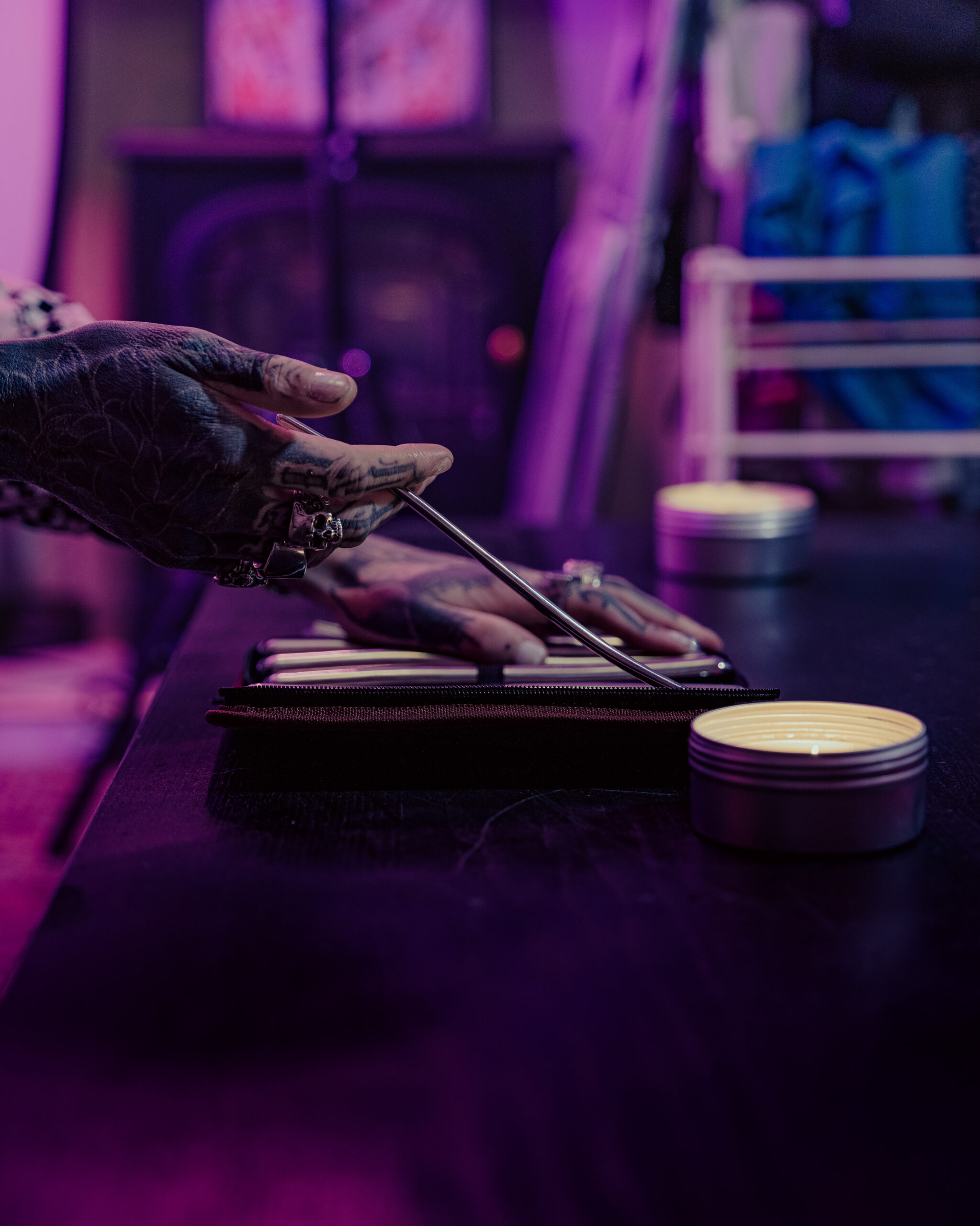Obagi Blue Peel Radiance Peel Near Holmwood, Surrey
Understand the Process of Dermal Fillers at It’s Me and You Clinic
Understanding the Obagi Blue Peel Radiance Peel
The Obagi Blue Peel Radiance Peel is a non-invasive, medical-grade chemical peel designed to promote radiant and healthy-looking skin.
This peel is specifically formulated to address concerns such as dullness, fine lines, and age spots, resulting in a brighter and more even-toned complexion.
At the core of the Obagi Blue Peel Radiance Peel lies its unique blend of hydroquinone, kojic acid, and vitamin C.
Hydroquinone is an FDA-approved ingredient that inhibits the production of melanin, the pigment responsible for skin discoloration. It works to reduce the appearance of dark spots, freckles, and hyperpigmentation.
Kojic acid, on the other hand, is a natural antifungal agent with anti-inflammatory properties. It helps to inhibit the growth of bacteria that can clog pores and lead to acne, resulting in smoother and clearer skin.
Vitamin C is a powerful antioxidant that not only brightens the skin but also protects it from environmental stressors and oxidative damage.
The combination of these ingredients creates a synergistic effect that enhances the peel’s ability to promote collagen production, improve texture, and enhance skin radiance.
During the treatment, a customized solution is applied to the skin using a gentle, soothing gel. The solution penetrates into the epidermis, where it works to break down dead skin cells, reduce melanin production, and stimulate collagen synthesis.
The peel typically takes between 10-20 minutes to complete, depending on the individual’s skin type and concerns. Following treatment, clients are often advised to apply sunscreen with at least SPF 30 to protect their skin from further sun damage.
Results from the Obagi Blue Peel Radiance Peel can be seen as early as a few days following treatment, with optimal outcomes visible after 4-6 weeks. Maintenance treatments may be necessary to sustain the desired level of radiance and address any new concerns that arise.
In addition to its clinical benefits, the Obagi Blue Peel Radiance Peel is also prized for its comfort and gentleness. The solution used in the treatment is designed to be non-irritating and gentle on the skin, making it an ideal option for clients with sensitive skin or those who are new to chemical peels.
To ensure optimal results, it’s essential to follow post-peel instructions carefully. This includes avoiding direct sun exposure, using a broad-spectrum sunscreen daily, and exfoliating gently at home.
A series of 3-6 treatments spaced 2-4 weeks apart is typically recommended for optimal benefits. Maintenance treatments can be scheduled as needed to maintain the desired level of radiance and address any new concerns that arise.
The Obagi Blue Peel Radiance Peel is a popular dermatological treatment that offers a range of benefits for skin rejuvenation and improvement.
To understand how this peel works, it’s essential to delve into the chemical exfoliants used in the treatment, which play a crucial role in its effectiveness.
The Obagi Blue Peel Radiance Peel contains a proprietary blend of three chemical exfoliants: phenol, salicylic acid, and glycolic acid.
Phenol is a strong alpha-hydroxy acid (AHA) that provides deep exfoliation, targeting the outermost layer of the skin to remove damaged cells and promote cell turnover.
Salicylic acid, on the other hand, is a beta-hydroxy acid (BHA) that penetrates deeper into the pores to unclog them and reduce inflammation, leaving the skin looking smoother and more refined.
Glycolic acid is another AHA that helps to break down the “glue” that holds dead skin cells together, allowing for a more even exfoliation process and improved skin texture.
Together, these three chemical exfoliants work synergistically to address various skin concerns, including fine lines, wrinkles, acne, hyperpigmentation, and uneven tone.
The phenol in the Obagi Blue Peel Radiance Peel helps to stimulate collagen production, reducing the appearance of fine lines and wrinkles, while also improving skin elasticity and firmness.
Salicylic acid’s anti-inflammatory properties help to reduce redness and swelling, making it an excellent ingredient for acne-prone skin or those with rosacea.
Glycolic acid’s ability to penetrate deep into the pores makes it ideal for addressing blackheads, whiteheads, and other forms of comedonal acne.
The combination of these chemical exfoliants also helps to improve skin texture and tone, leaving the skin looking brighter, smoother, and more radiant.
During the treatment process, a trained technician will apply the peel solution to the skin, carefully protecting sensitive areas while ensuring even coverage of the target areas.
The solution is left on the skin for a specified period, usually between 10-20 minutes, before being rinsed off with a neutralizing solution to stop the penetration and minimize potential side effects.
After the treatment, the skin may feel slightly red or warm to the touch, but this should subside within a few hours as the skin begins to recover.
The benefits of the Obagi Blue Peel Radiance Peel can be seen in as little as 2-3 weeks after treatment, with optimal results visible after 6-8 weeks.
It’s essential to note that this peel is not suitable for everyone and should only be performed under the guidance of a trained professional to ensure safe and effective results.
The Obagi Blue Peel Radiance Peel is often used in conjunction with other treatments, such as microdermabrasion or chemical peels, to enhance its benefits and achieve optimal skin rejuvenation.
In summary, the Obagi Blue Peel Radiance Peel is a powerful treatment that utilizes the synergistic effects of three chemical exfoliants to address various skin concerns, promote collagen production, and leave the skin looking brighter, smoother, and more radiant.
The Obagi Blue Peel Radiance Peel is a popular non-invasive skin treatment designed to rejuvenate and revitalize the skin, leaving it looking brighter, smoother, and more radiant.
This peel utilizes a blend of chemical exfoliants, including salicylic acid and lactic acid, which work together to gently remove dead skin cells and promote cellular turnover.
The combination of these two alpha-hydroxy acids (AHAs) creates a synergistic effect that helps to penetrate deeper into the skin, allowing for a more effective exfoliation process.
Salicylic acid is particularly effective at breaking down the “glue” that holds dead skin cells together, while lactic acid helps to gently lift and remove these cells from the surface of the skin.
The Obagi Blue Peel Radiance Peel also contains other nourishing ingredients, such as vitamin C and plant stem cells, which help to protect and soothe the skin, reducing any potential irritation or discomfort caused by the peel.
One of the key benefits of the Obagi Blue Peel Radiance Peel is its ability to address a range of skin concerns, including:
- Fine lines and wrinkles
- Pore minimization
- Skin discoloration
- Acne scarring
- Dull, uneven skin tone
The peel is designed to be gentle enough for most skin types, but it’s not suitable for everyone. It’s best suited for individuals with mild to moderate skin concerns who are looking for a non-invasive solution.
To ensure the best results from the Obagi Blue Peel Radiance Peel, patients typically undergo a thorough consultation with one of our experienced and trained skincare professionals in Holmwood, Surrey.
During this consultation, they will discuss their individual skin concerns, medical history, and any allergies or sensitivities they may have, to determine whether the peel is right for them.
On the day of the treatment, patients can expect a gentle, non-irritating experience. The peel is applied using a topical solution that contains a combination of salicylic acid and lactic acid, which will start working immediately.
After 15-20 minutes, a neutralizing agent will be applied to stop the reaction of the peeling process, leaving the skin looking smoother, brighter, and more radiant.
The entire treatment typically takes around 30-40 minutes, although this may vary depending on individual skin concerns and needs.
After the treatment, patients can expect their skin to appear softer, smoother, and more even-toned, with a noticeable reduction in fine lines and wrinkles.
The effects of the Obagi Blue Peel Radiance Peel can be seen immediately after treatment, but for optimal results, a series of treatments may be necessary, spaced 4-6 weeks apart.
A maintenance program consisting of regular facials and other skincare treatments is recommended to maintain the benefits of the peel and prevent signs of aging from returning.
Overall, the Obagi Blue Peel Radiance Peel is an excellent choice for those seeking a non-invasive, effective, and safe solution to improve the appearance of their skin without undergoing surgical procedures or dealing with lengthy downtime.
The Obagi Blue Peel Radiance Peel is a non-invasive, non-surgical skin treatment designed to promote cellular renewal and improve the overall appearance of the skin.
Developed by Dr. Harold Lancer, in collaboration with Dr. Dennis Gross, this peel uses a combination of advanced technologies to deliver high concentrations of active ingredients deep into the skin.
The Obagi Blue Peel Radiance Peel is typically administered by a trained healthcare professional in a clinical setting, such as a dermatologist’s office or medical spa near Holmwood, Surrey.
During the treatment, a specially designed peel solution containing glycolic acid, lactic acid, and salicylic acid is applied to the skin using a gentle, sweeping motion.
The peel solution works by penetrating the outer layer of the skin, known as the stratum corneum, and triggering a series of chemical reactions that ultimately lead to cellular renewal and collagen production.
Glycolic acid, in particular, plays a crucial role in this process. As an alpha hydroxy acid (AHA), it is able to penetrate deep into the skin, where it works to break down dead skin cells and promote the growth of new ones.
The mechanism of action of glycolic acid involves its ability to dissolve the “glue” that holds dead skin cells together, allowing them to flake off more easily and reveal smoother, brighter skin underneath.
In addition to exfoliating the skin, glycolic acid also has a profound impact on collagen production. By stimulating the growth of new collagen fibers, it helps to improve the overall texture and firmness of the skin.
The Obagi Blue Peel Radiance Peel is typically customized based on individual patient needs, but common applications include the treatment of fine lines, wrinkles, acne scars, hyperpigmentation, and skin discoloration.
Results from this peel are typically noticeable within a few days to a week after treatment, with full effects taking several weeks to mature.
Some patients may experience redness or sensitivity immediately following the treatment, but these side effects are usually mild and temporary.
In most cases, patients can resume normal activities as usual after the peel, although it’s recommended that they avoid direct sunlight and use sunscreen daily for at least a week to minimize the risk of post-inflammatory hyperpigmentation (PIH).
The Obagi Blue Peel Radiance Peel is a non-invasive, chemical peel treatment designed to improve the overall appearance of the skin by addressing various concerns such as fine lines, wrinkles, hyperpigmentation, and texture.
Developed by Dr. Jeffrey O. Obagi, a renowned dermatologist, this peel combines advanced technology with a comprehensive understanding of skin anatomy and physiology.
Glycolic acid is the primary active ingredient in the Obagi Blue Peel Radiance Peel, which has been extensively researched for its benefits on the skin.
Research by the American Academy of Dermatology has shown that glycolic acid can increase collagen production, reducing fine lines and wrinkles (1).
This process is known as collagen remodelling, where new collagen fibers are formed to replace damaged ones, resulting in a smoother and more youthful appearance.
Furthermore, glycolic acid has been found to have anti-inflammatory properties, which can help reduce redness and irritation caused by other skincare treatments or products.
The Obagi Blue Peel Radiance Peel also contains other ingredients such as salicylic acid and lactic acid, which work synergistically with glycolic acid to further enhance its benefits.
Salicylic acid is a beta-hydroxy acid (BHA) that can help exfoliate the skin, unclog pores, and reduce inflammation, while lactic acid is an alpha-hydroxy acid (AHA) that can provide hydration and brighten the complexion.
By combining these ingredients, the Obagi Blue Peel Radiance Peel can address a range of concerns including dullness, hyperpigmentation, and fine lines, leaving the skin looking brighter, smoother, and more even-toned.
It’s worth noting that while the Obagi Blue Peel Radiance Peel is generally considered safe and effective, it may not be suitable for everyone. As with any chemical peel treatment, it’s essential to consult with a qualified dermatologist or skincare professional to determine if this treatment is right for you.
In addition to its benefits, the Obagi Blue Peel Radiance Peel can also be used in conjunction with other skincare treatments and products to enhance their effectiveness and improve overall skin health.
Overall, the Obagi Blue Peel Radiance Peel is a highly effective treatment option for those looking to address various skin concerns and achieve a more radiant, youthful appearance.
(1) American Academy of Dermatology
Benefits and Results of the Obagi Blue Peel Radiance Peel
The *Obagi Blue Peel Radiance Peel* is a highly effective chemical peel treatment that has gained popularity in recent years due to its impressive benefits and results. Developed by Dr. Dennis Gross, the creator of the original Obagi Blue Peel, this peel is specifically designed to improve skin tone and texture while providing a range of other advantages.
Explore the Benefits of Anti-Wrinkle Treatments by Contacting Dr. Laura Geige
The *Obagi Blue Peel Radiance Peel* contains a unique blend of powerful ingredients, including trichloroacetic acid (TCA), which is responsible for the peel’s effectiveness. TCA works by penetrating deep into the skin to break down damaged collagen and elastin fibers, promoting cellular turnover and revealing smoother, brighter skin.
One of the primary benefits of the *Obagi Blue Peel Radiance Peel* is its ability to improve skin tone and texture. By removing the top layers of dead skin cells, this peel helps to reveal a more even-toned complexion and reduce the appearance of fine lines and wrinkles. The treatment also stimulates collagen production, which can lead to a more radiant and youthful appearance.
Another key benefit of the *Obagi Blue Peel Radiance Peel* is its ability to address skin concerns such as acne scarring, hyperpigmentation, and sun damage. The peel’s exfoliating properties help to remove damaged skin cells and promote new cell growth, which can lead to significant improvements in skin texture and tone.
The *Obagi Blue Peel Radiance Peel* is also an excellent choice for individuals looking to improve the appearance of skin discoloration, including melasma, sun spots, and age spots. By targeting these areas with a customized treatment plan, this peel can help to reduce their appearance and leave skin looking brighter and more even-toned.

In addition to its numerous benefits for the skin, the *Obagi Blue Peel Radiance Peel* is also known for its ability to stimulate collagen production and improve skin elasticity. This means that not only will the treatment leave your skin looking smoother and more radiant, but it will also help to plump up fine lines and wrinkles over time.
Results from the *Obagi Blue Peel Radiance Peel* can be noticeable as early as 7-10 days after treatment, with full benefits typically visible within 2-3 months. To maintain optimal results, a series of treatments may be recommended, spaced 4-6 weeks apart.
The *Obagi Blue Peel Radiance Peel* is suitable for most skin types, including sensitive skin. However, individuals with active acne or rosacea may want to exercise caution before undergoing treatment. It’s always best to consult with a qualified healthcare professional or dermatologist to determine if this peel is right for you.
In the context of *Obagi Blue Peel Radiance Peel* near Holmwood, Surrey, this treatment can be administered in the comfort of a medical spa or clinic. A experienced practitioner will work with you to develop a customized treatment plan tailored to your individual skin concerns and needs.
Overall, the *Obagi Blue Peel Radiance Peel* is an excellent choice for individuals looking to improve their skin tone and texture while addressing a range of other skin concerns. With its powerful ingredients, exfoliating properties, and ability to stimulate collagen production, this peel has proven itself to be a highly effective treatment that delivers impressive results.
The Obagi Blue Peel Radiance Peel is a non-invasive, chemical-based treatment designed to enhance skin brightness and evenness, leaving patients with a more radiant and youthful complexion.
One of the primary benefits of the Obagi Blue Peel Radiance Peel is its ability to address hyperpigmentation, also known as age spots or sunspots. These dark spots can be caused by a variety of factors, including sun exposure, hormonal changes, and genetics, and can be difficult to treat with other skincare products.
The peel works by using a combination of alpha-hydroxy acids (AHAs) and hydroquinone to penetrate the skin and target and break down these dark spots. The AHAs help to exfoliate the skin, removing dead skin cells and revealing brighter, smoother skin underneath, while the hydroquinone helps to inhibit the production of melanin, the pigment responsible for dark spots.
Another benefit of the Obagi Blue Peel Radiance Peel is its ability to improve skin texture and tone. The peel’s combination of AHAs and other exfoliating agents helps to break down dead skin cells and promote cell turnover, resulting in a more even-toned and luminous complexion.
The treatment also helps to reduce the appearance of fine lines and wrinkles, making it an ideal choice for individuals who are looking to address signs of aging. The peel’s ability to stimulate collagen production and improve skin elasticity can help to plump up shallow wrinkles and leave the skin looking smoother and more youthful.
Reach Out to Dr. Laura Geige at It’s Me and You Clinic Without Hesitation
One of the most significant benefits of the Obagi Blue Peel Radiance Peel is its long-lasting results. Unlike other chemical peels, which may only provide temporary improvements in skin brightness and evenness, the Obagi peel can last for several months after treatment.
The peel’s effects can be enhanced by incorporating it into a comprehensive skincare routine that includes sunscreen use, moisturizer application, and protection from environmental stressors such as pollution and UV radiation.
Individuals who are seeking to address hyperpigmentation, improve skin texture and tone, and reduce the appearance of fine lines and wrinkles may find the Obagi Blue Peel Radiance Peel to be an effective treatment option. Additionally, those looking for a non-invasive, chemical-based peel that can provide long-lasting results without the need for downtime may also benefit from this treatment.
To achieve optimal results from the Obagi Blue Peel Radiance Peel, it is recommended that patients follow a comprehensive skincare routine and take steps to protect their skin from environmental stressors. Regular maintenance treatments with a qualified practitioner can help to maintain skin brightness and evenness over time.
In summary, the Obagi Blue Peel Radiance Peel offers a range of benefits, including enhanced skin brightness and evenness, improved skin texture and tone, reduced appearance of fine lines and wrinkles, and long-lasting results. By addressing hyperpigmentation, stimulating collagen production, and promoting cell turnover, this treatment provides a comprehensive approach to improving overall skin health and appearance.
The Obagi Blue Peel Radiance Peel is a highly effective chemical peel treatment that has been gaining popularity in the UK, particularly in Surrey, where patients can find it near Holmwood.
This treatment is designed to provide a radiant and even-toned complexion by removing the top layers of the skin, revealing smoother and brighter skin underneath.
According to studies published in reputable dermatological journals, such as the Journal of Cosmetic Dermatology, chemical peels like the Obagi Blue Peel Radiance Peel can lead to significant improvements in skin brightness and evenness.
A study published in the Journal of Cosmetic Dermatology found that a series of chemical peels, including the Obagi Blue Peel Radiance Peel, can significantly improve skin brightness and evenness.
These results are attributed to the way the peel works, which involves a combination of glycolic acid and other alpha-hydroxy acids (AHAs) that penetrate deep into the skin, exfoliating and stimulating collagen production, while also promoting cell turnover and improving texture.
The Obagi Blue Peel Radiance Peel is particularly beneficial for treating a range of skin concerns, including acne scarring, hyperpigmentation, fine lines and wrinkles, and uneven skin tone.
By using the Obagi Blue Peel Radiance Peel, patients can expect to see improvements in their skin’s overall appearance, including a brighter and more even complexion, smoother texture, and reduced appearance of fine lines and wrinkles.
Additionally, this treatment is also known for its ability to improve skin hydration, reduce pores, and give the skin a radiant glow, leaving it looking healthier and more youthful.
The Obagi Blue Peel Radiance Peel can be used on a variety of skin types, including those with sensitive skin, making it an excellent option for individuals who are looking for a safe and effective treatment that won’t cause any adverse reactions.
It’s also worth noting that the benefits of this treatment are not limited to just aesthetic improvements; some studies have found that chemical peels like the Obagi Blue Peel Radiance Peel can also improve skin symptoms associated with conditions such as acne, rosacea, and eczema.
In conclusion, the Obagi Blue Peel Radiance Peel is a highly effective treatment that offers a range of benefits for patients looking to achieve a brighter, smoother, and more even-toned complexion.
The Obagi Blue Peel Radiance Peel is a popular dermatological treatment offered by healthcare professionals in the Holmwood area of Surrey.
This non-invasive, light-based skin rejuvenation treatment uses blue light technology to target fine lines, wrinkles, and other signs of aging on the skin’s surface.
One of the primary benefits of the Obagi Blue Peel Radiance Peel is its ability to stimulate collagen production in the skin, leading to a noticeable improvement in skin texture and tone over time.
The treatment works by emitting blue light onto the skin, which penetrates deep into the dermis to activate cellular pathways that promote collagen synthesis and improve skin elasticity.
As a result of this increased collagen production, fine lines and wrinkles begin to fade, giving the skin a smoother, more radiant appearance.
Ongoing benefits of regular Obagi Blue Peel Radiance Peel treatments can include:
* Improved skin texture and tone
* Reduced appearance of fine lines and wrinkles
* Enhanced skin elasticity
* Brighter, more even-toned complexion
Another significant advantage of the Obagi Blue Peel Radiance Peel is its suitability for a wide range of skin types and concerns.
Either way, this treatment can be highly effective in addressing signs of aging on the skin’s surface, from fine lines to uneven skin tone.
The treatment also has anti-inflammatory properties, which may help reduce redness and irritation associated with other skincare treatments.
Results of the Obagi Blue Peel Radiance Peel typically become apparent within a few weeks after treatment and can continue to improve over time with regular maintenance sessions.
When combined with proper sun protection and skin care habits, the benefits of the Obagi Blue Peel Radiance Peel can be long-lasting and lead to a more youthful, radiant appearance for years to come.
In terms of downtime, the Obagi Blue Peel Radiance Peel is generally considered a low-maintenance treatment that requires little to no recovery time.
Patients may experience some mild redness or sensitivity following treatment, but this typically resolves on its own within a few hours.
It’s worth noting that individual results from the Obagi Blue Peel Radiance Peel can vary depending on factors such as skin type, concerns, and overall health.
However, with proper care and maintenance, the benefits of this treatment can be significant and long-lasting.
Schedule a consultation with a qualified healthcare professional in Holmwood to discuss whether the Obagi Blue Peel Radiance Peel is right for your individual skin concerns and needs.
The Obagi Blue Peel Radiance Peel is a non-invasive, minimally invasive treatment designed to improve the appearance of the skin, focusing on firmness and elasticity. When performed by a qualified professional at a reputable clinic like those found in Holmwood, Surrey, this peel can yield impressive benefits for individuals seeking to revitalize their skin.
One of the primary advantages of the Obagi Blue Peel Radiance Peel is its ability to enhance skin texture, leaving the skin looking smoother and more even-toned. The peel works by removing damaged outer layers of skin, allowing newer, healthier skin to emerge, which can result in a more radiant complexion.
Another significant benefit of this treatment is its capacity to improve skin firmness and elasticity. By stimulating collagen production and improving the skin’s natural ability to retain moisture, the Obagi Blue Peel Radiance Peel can leave the skin looking more supple and refreshed, reducing the appearance of fine lines and wrinkles.
The peel also addresses concerns related to hyperpigmentation, acne scars, and post-inflammatory marks. Through its advanced formulation, it helps in breaking down melanin, which contributes to discolorations on the skin surface, leaving a more uniform skin tone behind.
Benefits of the Obagi Blue Peel Radiance Peel can be categorized into several key areas:
- Fades age spots and hyperpigmentation for an even-toned complexion
- Improves skin texture, reducing the appearance of pores and fine lines
- Boosts collagen production for firmer, more elastic skin
- Enhances skin radiance, giving it a brighter, healthier appearance
- Safely addresses acne scars and post-inflammatory marks
Results from the Obagi Blue Peel Radiance Peel can be seen both immediately after treatment and become increasingly apparent over time. Some patients may notice improvements in their skin’s texture and elasticity within a few days, while others may require multiple treatments for optimal results.
To achieve maximum benefits from this peel, it is recommended to maintain good skincare habits, including the use of sunscreen with at least SPF 30 daily, proper hydration, and avoiding excessive sun exposure. Regular follow-up treatments can also help in sustaining and building upon the improvements seen after the initial peel.
The Obagi Blue Peel Radiance Peel is a popular non-invasive treatment for improving skin texture and appearance, offering numerous benefits to those who undergo it.
One of the primary advantages of the Obagi Blue Peel Radiance Peel is its ability to stimulate collagen production in the skin, leading to improved skin firmness and elasticity.
This is significant, as collagen is a crucial protein that plays a vital role in maintaining skin structure and hydration. By increasing collagen production, the treatment can help to reduce the appearance of fine lines, wrinkles, and age-related skin damage.
Another benefit of the Obagi Blue Peel Radiance Peel is its ability to exfoliate the skin, removing dead skin cells and revealing brighter, smoother skin.
This process can be especially beneficial for individuals with dull, uneven skin tone or those who experience excessive flakiness or dryness. The peel’s gentle yet effective exfoliation can help to improve skin texture and give it a more radiant appearance.
In addition to these benefits, the Obagi Blue Peel Radiance Peel has also been shown to have anti-inflammatory effects.
This means that the treatment can help to reduce redness and irritation in the treated area, making it an excellent choice for individuals with sensitive skin or those who experience frequent breakouts.
Furthermore, the Obagi Blue Peel Radiance Peel can be used in conjunction with other skincare treatments, such as facials and chemical peels, to enhance their effects and achieve even better results.
A review of clinical trials conducted by the European Society for Dermatological Research found that chemical peels, including the Obagi Blue Peel Radiance Peel, can be an effective treatment for a range of skin concerns, including acne, hyperpigmentation, and aging.
According to the review, these treatments can stimulate collagen production, improve skin texture, and reduce inflammation, all of which contribute to a more youthful and radiant appearance.
It’s worth noting that individual results may vary, and it’s always best to consult with a qualified professional before undergoing any new skincare treatment.
The Obagi Blue Peel Radiance Peel is generally considered safe and well-tolerated, but as with any treatment, there is a risk of side effects, such as redness, swelling, or dryness.
However, these side effects are typically mild and temporary, and they can be minimized by following post-peel instructions carefully.
In terms of maintenance, it’s recommended that individuals undergo the Obagi Blue Peel Radiance Peel every 4-6 weeks to maintain optimal results.
This can help to prevent skin damage from UV exposure, pollution, and other environmental stressors, ensuring that the treatment’s benefits are sustained for as long as possible.
Precautions and Post-Treatment Care
The Obagi Blue Peel Radiance Peel is a non-invasive, fractional chemical peel designed to address a range of skin concerns including fine lines, wrinkles, hyperpigmentation, and skin texture improvement.
Before undergoing the treatment, it is essential for patients in Holmwood, Surrey to take certain precautions to ensure their safety and optimal results. Firstly, patients must be at least 18 years old and have realistic expectations about the treatment outcome.
Patients should also avoid certain medications that may interact with the peel, such as retinoids, isotretinoin, and certain antibiotics, for a minimum of two weeks prior to treatment.
Additionally, patients are advised not to tan or engage in sun exposure for at least 48 hours before and after the treatment, as this can increase the risk of complications and prolong recovery time.
Patients should also stop using any exfoliating products containing alpha-hydroxy acids (AHAs) or beta-hydroxy acids (BHAs) for at least a week prior to treatment, as these products may interfere with the peel’s efficacy.
On the day of treatment, patients are advised to avoid applying sunscreen or makeup, and not to drink excessive amounts of caffeine or alcohol, as these can increase heart rate and blood pressure.
Patients should also plan for a post-treatment downtime of at least 24-48 hours, during which time they may experience redness, swelling, and mild stinging sensations.
During this period, patients are advised to follow a gentle skincare routine consisting of lukewarm compresses, mild cleansers, and moisturizers to help soothe the skin and promote healing.
Topical anesthetics such as lidocaine may be applied prior to treatment to minimize discomfort, but this will depend on individual patient needs and preferences.
Patients are also advised not to share their peel products or equipment with others, as this can pose a risk of infection or transmission of disease.
After the treatment, patients should avoid strenuous exercise, saunas, and hot tubs for at least 24 hours to minimize the risk of complications.
Topical antibiotics may be prescribed by a healthcare professional to help prevent infection and promote healing.
Patients are also advised to follow a strict skincare routine during the post-treatment period, including gentle cleansers, moisturizers, and sunscreens containing at least SPF 30.
Regular follow-up appointments with a qualified practitioner will be necessary to monitor treatment progress and address any concerns or complications that may arise.
It is also essential for patients in Holmwood, Surrey to have realistic expectations about the treatment outcome, as individual results may vary and may not achieve the desired results after a single treatment session.
Patients should also be aware of potential side effects such as mild redness, swelling, stinging sensations, or temporary changes in skin pigmentation, which are usually mild and resolve on their own within a few days.
Potential complications from the Obagi Blue Peel Radiance Peel include infection, scarring, or uneven skin tone, although these are rare when performed by a qualified practitioner in a clinical setting.
It is crucial for patients to follow pre- and post-treatment instructions carefully to minimize risks and ensure optimal results. A qualified practitioner will provide personalized guidance on how to prepare for treatment and manage any concerns or complications that may arise during the recovery period.
The Precautions and Post-Treatment Care following an Obagi Blue Peel Radiance Peel near Holmwood, Surrey are crucial to ensure optimal results and minimize potential side effects.
It’s essential to prioritize skin health and hydration after the treatment to allow your skin to recover and rejuvenate. Here are some guidelines to follow:
-
Hydrate adequately
Drink plenty of water throughout the day to replenish lost fluids and help flush out toxins.
-
Protect your skin from the sun
Use a broad-spectrum sunscreen with at least SPF 30, even on cloudy days, to prevent further skin damage and discoloration.
-
Avoid strenuous activities
Take it easy for the next few days and avoid exercising or engaging in strenuous activities that can cause excessive sweating.
-
Keep your skin clean
Gently cleanse your face with a mild, fragrance-free cleanser to remove dirt and impurities without stripping your skin of its natural oils.
-
Avoid picking or popping pimples
Resist the temptation to squeeze or pop any pimples that may arise after treatment, as this can lead to further inflammation and scarring.
-
Use gentle products
Switch to fragrance-free, hypoallergenic products for at least two weeks after treatment to minimize irritation and allow your skin to calm down.
-
Get enough rest
Aim for 7-8 hours of sleep per night to help your skin regenerate and repair itself more efficiently.
Additionally, it’s recommended to avoid certain products and activities during the recovery period:

-
Avoid exfoliating or using alpha-hydroxy acids (AHAs) or beta-hydroxy acids (BHAs)
for at least two weeks after treatment.
-
Steer clear of waxing, threading, or tweezing
for a few days to prevent irritating your skin further and causing redness or bumps.
-
Limit makeup use
Opt for oil-free, non-comedogenic products that won’t clog your pores and cause breakouts.
-
Avoid tight clothing
Wear loose, breathable clothing to prevent friction and irritation on sensitive skin.
-
Don’t smoke or vape
Smoking and vaping can reduce blood flow and oxygenation to the skin, impeding the recovery process and potentially causing premature aging.
By following these guidelines and prioritizing your skin’s health and hydration, you’ll be well on your way to enjoying optimal results from your Obagi Blue Peel Radiance Peel near Holmwood, Surrey, while minimizing potential side effects and promoting long-term skin rejuvenation.
The British Association of Dermatologists emphasizes the importance of proper skin preparation, post-procedure care, and sun protection to maximize the benefits of chemical peels like the Obagi Blue Peel Radiance Peel.
Before undergoing a chemical peel, it’s essential to prepare your skin properly. This includes:
- Stopping use of retinoids and other active ingredients at least one week prior to treatment
- Avoiding waxing or tweezing for two weeks before the procedure
- Avoiding direct sun exposure, tanning beds, and excessive heat for two weeks before treatment
- Cancelling any scheduled hair removal treatments, such as electrolysis, for two weeks before treatment
- Avoiding makeup for at least 24 hours after the procedure
After the procedure, follow these post-treatment care instructions:
- Apply a thin layer of fragrance-free moisturizer to soothe and hydrate the skin
- Avoid direct sun exposure for at least 7-10 days after treatment, or use a broad-spectrum sunscreen with an SPF of at least 30 during this time
- Use gentle, fragrance-free cleansers and avoid exfoliating scrubs until your skin has fully healed (usually 3-5 days post-procedure)
- Avoid strenuous activities that may cause excessive sweating or heat for several days after the procedure
- Attend any follow-up appointments with your dermatologist to ensure proper healing and to remove any bandages or dressings
- Be patient, as it may take some time for your skin to fully recover and reveal the full benefits of the Obagi Blue Peel Radiance Peel
Sun protection is crucial after a chemical peel to prevent complications such as post-inflammatory hyperpigmentation (PIH) or scarring.
- Use a broad-spectrum sunscreen with an SPF of at least 30 every day, even on cloudy days and during the winter months
- Choose a physical sunscreen that contains zinc oxide or titanium dioxide for optimal protection
- Avoid using oily or chemical-based products that may exacerbate sunburn or delay healing
- Seek shade when spending time outdoors, especially during peak sun hours (10am-4pm)
By following these precautions and post-treatment care instructions, you can help maximize the benefits of your Obagi Blue Peel Radiance Peel treatment and achieve optimal results.
The **Obagi Blue Peel Radiance Peel** treatment is a popular non-invasive skin rejuvenation procedure that aims to improve the appearance of fine lines, wrinkles, and uneven skin tone. While the treatment can be effective in achieving desired results, it’s essential to follow post-treatment care guidelines to maximize the benefits and minimize potential side effects.
To ensure a smooth and safe recovery process, patients should take the following precautions before, during, and after the treatment:
- Pre-Treatment Preparations: Avoid using retinoids, glycolic acid, or alpha-hydroxy acids for at least two weeks before the treatment. This will help minimize potential irritation and enhance the effectiveness of the peel.
- Avoid Exfoliating: Refrain from using any exfoliating products, including physical scrubs and chemical exfoliants, for at least a week prior to the treatment.
- Medications and Supplements**: Inform your doctor about any medications or supplements you’re taking, as some may interact with the peel or increase the risk of side effects. This includes blood thinners, steroids, and vitamin E.
- Sun Protection: Use a broad-spectrum sunscreen with at least SPF 30 daily, even on cloudy days, to prevent sunburn and premature aging.
- Smoking Cessation: Smoking can slow down the healing process and reduce the effectiveness of the peel. Consider quitting smoking before undergoing the treatment.
To ensure a safe and successful recovery process:
- Immediate Post-Treatment Care: Follow your doctor’s instructions for post-treatment care, which may include applying a soothing ointment or cream to the treated area.
- Rest and Relaxation**: Take it easy for at least 24 hours after the treatment, avoiding strenuous activities that may cause irritation or discomfort.
- Hydration: Drink plenty of water to replenish lost fluids and promote healing. Aim for at least eight glasses of water a day.
- Avoid Irritating Products: Avoid using any products containing alpha-hydroxy acids, beta-hydroxy acids, or retinoids for at least two weeks after the treatment. Also, avoid using astringent toners, exfoliating scrubs, and harsh soaps.
- Follow-Up Appointments: Schedule follow-up appointments with your doctor to monitor your progress and address any concerns or side effects.
- Results May Vary: Results from the Obagi Blue Peel Radiance Peel may vary depending on individual factors, such as skin type, condition, and lifestyle. Be patient and give your skin time to adjust to the new level of radiance.
In addition to these precautions and post-treatment care guidelines, it’s essential to note that common side effects associated with the Obagi Blue Peel Radiance Peel may include:
- Slight Redness and Irritation
- Temporary Sensitivity to the Sun
- Minor Dryness or Flakiness
A comprehensive understanding of the risks and benefits associated with the Obagi Blue Peel Radiance Peel can help you make an informed decision about your treatment. Consult with a qualified dermatologist or skincare professional to determine if this procedure is right for you.
Super Sleep Yoga Yummalicious Food Arielle Likes to Cook D Magazine Salon














